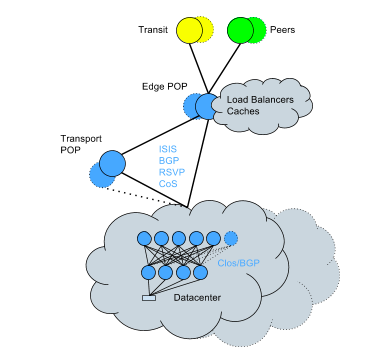

Posted on 11/09/2022 9:16:35 AM PST by Cronos
On November 4, just hours after Elon Musk fired half of the 7,500 employees previously working at Twitter, some people began to see small signs that something was wrong with everyone’s favorite hellsite. And they saw it through retweets.
Twitter introduced retweets in 2009, turning an organic thing people were already doing—pasting someone else’s username and tweet, preceded by the letters RT—into a software function. In the years since, the retweet and its distant cousin the quote tweet (which launched in April 2015) have become two of the most common mechanics on Twitter.
But on Friday, a few users who pressed the retweet button saw the years roll back to 2009. Manual retweets, as they were called, were back.
The return of the manual retweet wasn’t Elon Musk’s latest attempt to appease users. Instead, it was the first public crack in the edifice of Twitter’s code base—a blip on the seismometer that warns of a bigger earthquake to come.
...“Sometimes you’ll get notifications that are a little off,” says one engineer currently working at Twitter, who’s concerned about the way the platform is reacting after vast swathes of his colleagues who were previously employed to keep the site running smoothly were fired
After struggling with downtime during its “Fail Whale” days, Twitter eventually became lauded for its team of site reliability engineers, or SREs. Yet this team has been decimated in the aftermath of Musk’s takeover
Those within Twitter, and those watching from the sidelines, have previously argued that Twitter’s knowledge base is overly concentrated in the minds of a handful of programmers, some of whom have been fired.)
.... “A lot of the people I saw who were leaving after Friday have been there nine, 10, 11 years, which is just ridiculous for a tech company,”
(Excerpt) Read more at technologyreview.com ...
This only makes sense if someone sabotaged the code by reverting it to a previous version.
This doesn’t make any sense.
It’s not machinery that needs oil and maintenance. It’s code. It doesn’t degrade or ware out when someone isn’t watching over it.
Something tells me the harkonnen were busy planting sabotage devices in Arrakis
It will be interesting to see into which list Twitter ends up.
The fired twitters can always find jobs at Facebook. Oh wait...


They’re just upset they can’t censor different opinions anymore.
Sabre technology, P&G and a host of other companies are hiring, but not in California
To solve the bin-packing issues that come with RSVP auto-bandwidth, they implemented TE++, which, as traffic increases, creates additional LSPs and removes them when traffic drops off. This allows us to efficiently manage traffic between nodes while reducing the CPU burden of maintaining large amounts of LSPs.
here’s a link https://www.rfc-editor.org/rfc/rfc3031
That was my thought, as well. Someone planted a bomb that goes off if someone doesn't flip the secret kill switch.
There is always some temporary technical pain due to the loss of “tribal knowledge” after a big layoff.
That stuff is fascinating to me.
I should have learned this stuff in the 2000s back when it would have really helped me out.
People don’t realise the extreme complexity of modern distributed microservices architecture.
My background and experience until recently was datawarehousjng then analytics and data science. But fir the past couple of years I’ve been managing programs with Java etc and am astounded by how things have changed since the last tine I looked at the transactional world (circa 2004). It’s insane. Wrapping my head around kubernetes is bad enough, but in a multi cloud environment, it’s supremely complicated
It is fascinating. As I said above, I’m learning my way through this new world and adding in stuff like GDPR, data residency to the container world and microservices... just wow!
DING DING DING....
Easiest shit in the world for a code jockey to do.
F——king programmers... I remember those a-—holes in the 90’s laughing about the bugs they deliberately put into ACCOUNTING CODE to screw up sh——t and make certain they would have forever contracts...
See my post.
I know why there are “issues” with ‘even most recent builds’.
Job security.
But this is about the network balancing. Not programming. Do you code?
The only way this article is correct is if Twitter’s systems are very, very badly architected.
Twitter runs on CentOS 7. This free Red Hat Enterprise Linux (RHEL) clone comes to the end of its life at the end of June 2024. The leading choices for what to replace it with should be RHEL 9, Rocky Linux, or AlmaLinux. But instead of working on on that transition, what few system administrators Twitter has left are both trying to get the platform ready for Musk’s laundry list of new features and keeping it patched and up-to-date.
Remember also that centos needs in house linux support.
Besides which, it seems to use esoteric scaling solutions such as Apache Heron for stream processing and twemproxy for cache scaling. Granted this may be because their scaling needs are uniquely unpredictable.
Disclaimer: Opinions posted on Free Republic are those of the individual posters and do not necessarily represent the opinion of Free Republic or its management. All materials posted herein are protected by copyright law and the exemption for fair use of copyrighted works.